Testosterone deficiency in men, aka hypogonadism, is associated with increased total and abdominal fat mass, and reduced muscle mass, which negatively impacts body composition.[1, 2] This contributes to development of risk factors like insulin resistance, chronic inflammation, and atherogenic dyslipidemia (a triad of increased blood levels of small, dense LDL particles and triglycerides, and decreased levels of HDL particles), which increase the risk for cardiovascular disease, metabolic syndrome and diabetes.[1, 3-16]
Previous studies have shown that testosterone replacement therapy ameliorates these risk factors in testosterone deficient (hypogonadal) men; it increases insulin sensitivity [17-20] and HDL (the “good” cholesterol)[9, 10, 20, 21], and reduces waist circumference [9, 20, 22], fasting blood glucose [9, 20] triglycerides (blood fats)[9], LDL (the “bad” cholesterol) [19, 22-24], and several inflammatory markers.[17, 25]
A 2011 meta-analysis concluded that testosterone replacement therapy improves metabolic control, as well as reduces abdominal obesity.[9] Many studies have shown that testosterone replacement therapy in hypogonadal men increases muscle mass and reduces fat mass.[19, 26-32] Further, adding testosterone (50 mg/day for 1 year, administered as a transdermal gel) to a diet and exercise program results in greater therapeutic improvements of glycemic control and reverses the metabolic syndrome.[20]
Testosterone also has direct (non-obesity mediated) beneficial effects on many metabolic and cardiovascular risk factors [12, 33-37], and reduces death risk independently of body fat status.[38] In line with all these effects, low testosterone levels are associated with increased risk of cardiovascular complications [39], and all-cause and cardiovascular disease death [40-42]. Low testosterone may thus be a predictive marker for men at high risk of cardiovascular disease.[41] In a group of men aged 50-91 who were followed for 20 years, it was found that men whose total testosterone levels were in the lowest quartile (241 ng/dl or lower) were 40% more likely to die than those with higher levels, independent of age, adiposity, lifestyle or presence of cardiovascular risk factors.[38]
Thus, treatment of testosterone deficient men with testosterone has demonstrated considerable health benefits. Despite this, critics state that most of the studies on testosterone replacement therapy were too small. They also argue that the studies were of too short duration (most of them lasting 6-12 months), and that the long-term effects of testosterone on body composition are not known.
Two 5 year long studies were just published that addressed the duration and small study size shortcomings in previous research…
Effect of testosterone replacement therapy on body fat and waist circumference
This was a registry study of 255 men, aged between 33 and 69 years (mean age 58), who had sought consultation in an urologist’s office for various medical conditions, e.g. erectile dysfunction, decreased libido, questions about their testosterone status or a variety of urological complaints. [43]
Upon clinical and laboratory investigation, the subjects were found to have subnormal total testosterone levels, mean 223 ng/dl. All men received treatment with testosterone undecanoate injection (a long acting form of testosterone [44, 45]) at a dose of 1000 mg administered at baseline and 6 weeks and thereafter every 12 weeks for up to 5 years (60 months). Body weight and waist circumference were measured at baseline and yearly.

* The testosterone treatment resulted in a significant increase in total testosterone levels, which increased from a baseline level of 223 ng/dl to 467 ng/dl within the first 12 months, and thereafter stabilized between 519-548 ng/dl for the remainder of the observation period.
* Waist circumference declined from 42.4 in (107.7 cm) to 39 in (99 cm), with a mean reduction of 3.7 in (9.4 cm). The reduction in waist circumference was significant at the end of each year compared to the previous year over the full 5-year observation period.
* Body weight decreased from 221 lb (100.1 kg) to 204 lb (92.5 kg), with a mean loss of 24.5 lb (11.1 kg).
As for the waist circumference reductions, the weight loss was significant at the end of each year compared with the previous year over the full 5-year observation period.
* Of 261 patients treated with testosterone for 5 years, only 6 patients (2.3 %) got diagnosed with prostate cancer.
Effect of testosterone replacement therapy on metabolic syndrome components
The same research group performed another study investigating the effects of the same 5 year long testosterone replacement therapy on metabolic syndrome components [46]. In this study, the testosterone deficient (hypogonadal) men had baseline total testosterone levels of 286 ng/dl (mean value), range 170-350 ng/dl. As in the above mentioned study, all men received treatment with testosterone undecanoate injection, 1000 mg administered at baseline and 6 weeks and thereafter every 12 weeks for up to 5 years (60 months). Blood lipids, glucose, liver enzymes and haemoglobin A1c (HbA1c) were measured at baseline and yearly.
* The testosterone treatment resulted in a marked and significant gradual decrease in LDL “bad” cholesterol levels from approximately 164 mg/dl (4.2 mmol/L) to approximately 110 mg/dl (2.8 mmol/L).
The reduction in LDL level was significant within the first year of treatment and remained low over the course of 5-year treatment period.
* HDL “good” cholesterol levels increased slightly but significantly and remained elevated over the 5-year period of treatment. The increase was gradual and significant within the first year of treatment.
* The total cholesterol/HDL ratio, which gives an indication of cardiovascular disease risk [47, 48], improved considerably from 5.44 to 3.49, suggesting a favorable change in the lipid profile and a potential reduction in cardiovascular disease risk.
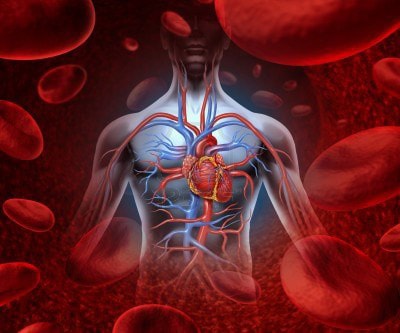
* Triglyceride levels decreased from 276 mg/dl (3.1 mmol/L) to 190 mg/dl (2.2 mmol/L), and remained low throughout the 5-year treatment period. The reduction in triglyceride level was significant within the first year of treatment and remained low over the course of 5-year treatment period.
* Systolic blood pressure was reduced from about 154 to 138 mmHg and diastolic blood pressure was reduced from 93 to 80 mmHg. The decreases in blood pressure were significant and gradual over the first 2 years and remained low over the entire course of the 5 years of treatment.
* Fasting blood glucose dropped from 103.4 mg/dl (5.74 mmol/L) to 97.6 mg/dl (5.74 mmol/L). The decrease was significant after 12 months and further declined after 24 months and then reached a plateau.
* The decrease in fasting blood glucose was paralleled by a marked decrease in glycated hemoglobin (HbA1c), from 7.06 % to 6.16%. In contrast to fasting glucose, the decrease in HbA1c was statistically significant after 12 months, between 24 and 12 months, between 36 and 24 months, between 48 and 36 months, and between 60 and 48 months.
* The inflammatory marker CRP was markedly and significant decreased from 6.29 to 1.03 U/L), with a plateau after 36 months.
* The liver enzymes aspartate transaminase (AST) dropped from 43 to 20 U/L) , with a plateau after 24 months), and alanine transaminase (ALT) from 44 to 21 U/l , with a plateau after 36 months).
* Prostate volume increased from 28.51 ml to 30.04 ml, reaching a plateau after 3 years. PSA (prostate specific antigen increased from 1.77 to 1.83 ng/ml, with a plateau after 2 years. There were no occurrences of urinary retention or other problems related to benign prostatic hyperplasia (BPH). Only 3 patients were diagnosed with prostate cancer. This represents an incidence of 1.2% (3 patients out of 255).
Commentary
These two studies provide compelling data on the benefits and safety of testosterone replacement therapy, and confirm the results of previous smaller and shorter duration studies.
Prostate
The 1.2-2.3% incidence of prostate cancer in these studies is far lower than the 9.6% incidence reported in the general population.[49] Another 5 year long safety study has also found that testosterone treatment didn’t change neither the Prostate Symptom Score (IPSS), post-void residual (PVR) volume, maximum urinary flow (Qmax) rate nor prostate size in obese testosterone deficient men with metabolic syndrome and moderate lower urinary tract symptoms at baseline.[50] Additional support for prostate safety with testosterone replacement therapy comes from meta-analysis of 19 studies, which revealed no greater risk of prostate cancer in men with testosterone deficiency who received testosterone therapy versus men who received placebo.[51] Another 6-year long study confirmed the prostate safety of testosterone replacement therapy.[52] Further, a large international study comprising 3886 men with prostate cancer and 6438 age-matched controls found no associations between prostate cancer risk and blood levels of total testosterone, free testosterone, or dihydrotestosterone.[53, 54] In the to date largest worldwide sample of hypogonadal men, testosterone replacement was found to be safe, effective and well tolerated.[55]
As I discussed in a previous article “Testosterone Replacement Therapy – why is it so controversial?” , there is no compelling evidence that testosterone is the driving factor in the development or progression of prostate cancer.[56] Evidence accumulated over the last 15 years strongly indicates that beyond the near-castrate range there is little, if any impact of changes in testosterone levels on prostate cancer growth.[57]
Testosterone levels
It should be noted that the baseline total testosterone levels is these two studies were in the low normal range, and that testosterone dose was low and given over an extended period of time. Also, the final level of 520-550 ng/dl is still probably suboptimal for most men.

Although there is no consensus as to what is a desirable range of testosterone, clinical data suggest that the normal range of testosterone in adult men is between 346-1154 ng/dl (12-40 nmol/L).[58] A threshold of 349 ng/dl (12.1 nmol/L) representing the lower end of the normal range was confirmed in an analysis of a number of well-known studies such as Framingham Heart Study generations 2 and 3, European Male Aging Study and the Osteoporotic Fractures in Men Study.[59] The large normal reference range of testosterone levels in adult men underscores the importance of contrasting the low end with the high end.
This was illustrated in a study showing that testosterone levels have to exceed 550 ng/dl in order to cut cardiovascular disease risk.[39] Also, triglyceride levels can respond differently in the low end vs. high end of the normal reference range.[60] Additionally, both supplementation dose and age will influence the outcomes.[12, 61] I will cover this more in-depth in an upcoming article.
HDL
Studies on the effect of testosterone on HDL have been inconsistent, showing increase [10, 21], decrease [62-66] or no changes [22-24, 26] in HDL levels in testosterone deficient med treated with testosterone. One analysis showed, counter intuitively, that larger doses of testosterone were associated with smaller declines in HDL.[66] These discrepancies in the various studies may relate to use of varying formulations of testosterone, dosage administered, duration of the studies, co-morbidities of subjects enrolled in the various studies. The decrease in HDL in response to testosterone supplementation was seen mostly in studies with supra-physiological testosterone doses.[28, 67, 68] Recently studies have shed light on the importance of HDL quality and function, as opposed to just HDL levels (quantity) [34], which is the commonly measured HDL parameter. Accumulating data is showing that testosterone beneficially might affect several aspects of HDL composition and functionality [69-71]. The link between testosterone levels and HDL quality and quantity is subject of intense research and debate, which I will go over in an upcoming article.
Triglycerides (blood fats) and the triglyceride/HDL ratio – LDL particle size and Insulin Resistance
Another interesting finding in the second of the above outlined studies is the marked reduction in triglyceride levels.[46] This will lower the triglyceride/HDL ratio (especially when combined with an HDL elevation), which in turn reduces insulin resistance and increases LDL particle size.[72]
An increased LDL particle size indicates an improvement of atherogenic dyslipidemia, and can convert a person from the dangerous “pattern B” to the healthier “pattern A”. For more on the LDL particle size and patterns A and B, check out my previous article “Blood Cholesterol Testing – don’t let the simple numbers fool you!”
A decreased triglyceride/HDL ratio also indicates improved insulin sensitivity [72-76]. Thus the reduction in triglyceride/HDL ratio seen in the 5-year long testosterone replacement study [46] confirms previous research showing that testosterone improves insulin sensitivity. [17, 18]
Total cholesterol/HDL ratio
The total cholesterol/HDL ratio (like the just mentioned triglyceride/HDL ratio) gives an indication of cardiovascular disease risk [47, 48]. A decrease in the total cholesterol/HDL ratio from 5.44 to 3.49 with testosterone therapy [46] therefore indicates improvement in another aspect of the blood lipid profile, and a reduction in cardiovascular disease risk.
Bottom Line
In the long-term studies outlined in this article [43, 46], subjects were told to keep their habitual lifestyle, so the results are not due to any major other intervention. The remarkable effects of testosterone replacement therapy seen in these two studies, even at low dosages, shows how powerful testosterone therapy can be, and how greatly it can contribute to combat expanding waistlines, obesity, metabolic syndrome, cardiovascular disease and diabetes.
References:
1. Wang, C., et al., Low testosterone associated with obesity and the metabolic syndrome contributes to sexual dysfunction and cardiovascular disease risk in men with type 2 diabetes. Diabetes Care, 2011. 34(7): p. 1669-75.
2. Cattabiani, C., et al., Relationship between testosterone deficiency and cardiovascular risk and mortality in adult men. J Endocrinol Invest, 2012. 35(1): p. 104-20.
3. Traish, A.M., et al., The dark side of testosterone deficiency: III. Cardiovascular disease. J Androl, 2009. 30(5): p. 477-94.
4. Corona, G., et al., Hypogonadism as a risk factor for cardiovascular mortality in men: a meta-analytic study. Eur J Endocrinol, 2011. 165(5): p. 687-701.
5. Klop, B., J.W. Elte, and M.C. Cabezas, Dyslipidemia in obesity: mechanisms and potential targets. Nutrients, 2013. 5(4): p. 1218-40.
6. Ebbert, J.O. and M.D. Jensen, Fat depots, free fatty acids, and dyslipidemia. Nutrients, 2013. 5(2): p. 498-508.
7. Yeap, B.B., et al., Lower serum testosterone is independently associated with insulin resistance in non-diabetic older men: the Health In Men Study. Eur J Endocrinol, 2009. 161(4): p. 591-8.
8. Traish, A.M., et al., The dark side of testosterone deficiency: I. Metabolic syndrome and erectile dysfunction. J Androl, 2009. 30(1): p. 10-22.
9. Corona, G., et al., Testosterone and metabolic syndrome: a meta-analysis study. J Sex Med, 2011. 8(1): p. 272-83.
10. Saad, F., et al., A dose-response study of testosterone on sexual dysfunction and features of the metabolic syndrome using testosterone gel and parenteral testosterone undecanoate. J Androl, 2008. 29(1): p. 102-5.
11. Haring, R., et al., Prospective association of low total testosterone concentrations with an adverse lipid profile and increased incident dyslipidemia. Eur J Cardiovasc Prev Rehabil, 2011. 18(1): p. 86-96.
12. Firtser, S., et al., Relation of total and free testosterone and sex hormone-binding globulin with cardiovascular risk factors in men aged 24-45 years. The Cardiovascular Risk in Young Finns Study. Atherosclerosis, 2012. 222(1): p. 257-62.
13. Jones, R.D., et al., Testosterone and atherosclerosis in aging men: purported association and clinical implications. Am J Cardiovasc Drugs, 2005. 5(3): p. 141-54.
14. Kalinchenko, S.Y., et al., Effects of testosterone supplementation on markers of the metabolic syndrome and inflammation in hypogonadal men with the metabolic syndrome: the double-blinded placebo-controlled Moscow study. Clin Endocrinol (Oxf), 2010. 73(5): p. 602-12.
15. Zmuda, J.M., et al., Longitudinal relation between endogenous testosterone and cardiovascular disease risk factors in middle-aged men. A 13-year follow-up of former Multiple Risk Factor Intervention Trial participants. Am J Epidemiol, 1997. 146(8): p. 609-17.
16. Traish, A.M., F. Saad, and A. Guay, The dark side of testosterone deficiency: II. Type 2 diabetes and insulin resistance. J Androl, 2009. 30(1): p. 23-32.
17. Aversa, A., et al., Effects of testosterone undecanoate on cardiovascular risk factors and atherosclerosis in middle-aged men with late-onset hypogonadism and metabolic syndrome: results from a 24-month, randomized, double-blind, placebo-controlled study. J Sex Med, 2010. 7(10): p. 3495-503.
18. Kapoor, D., et al., Testosterone replacement therapy improves insulin resistance, glycaemic control, visceral adiposity and hypercholesterolaemia in hypogonadal men with type 2 diabetes. Eur J Endocrinol, 2006. 154(6): p. 899-906.
19. Jones, T.H., et al., Testosterone replacement in hypogonadal men with type 2 diabetes and/or metabolic syndrome (the TIMES2 study). Diabetes Care, 2011. 34(4): p. 828-37.
20. Heufelder, A.E., et al., Fifty-two-week treatment with diet and exercise plus transdermal testosterone reverses the metabolic syndrome and improves glycemic control in men with newly diagnosed type 2 diabetes and subnormal plasma testosterone. J Androl, 2009. 30(6): p. 726-33.
21. Zitzmann, M. and E. Nieschlag, Androgen receptor gene CAG repeat length and body mass index modulate the safety of long-term intramuscular testosterone undecanoate therapy in hypogonadal men. J Clin Endocrinol Metab, 2007. 92(10): p. 3844-53.
22. Permpongkosol, S., N. Tantirangsee, and K. Ratana-olarn, Treatment of 161 men with symptomatic late onset hypogonadism with long-acting parenteral testosterone undecanoate: effects on body composition, lipids, and psychosexual complaints. J Sex Med, 2010. 7(11): p. 3765-74.
23. Page, S.T., et al., Exogenous testosterone (T) alone or with finasteride increases physical performance, grip strength, and lean body mass in older men with low serum T. J Clin Endocrinol Metab, 2005. 90(3): p. 1502-10.
24. Uyanik, B.S., et al., Beneficial effects of testosterone undecanoate on the lipoprotein profiles in healthy elderly men. A placebo controlled study. Jpn Heart J, 1997. 38(1): p. 73-82.
25. Malkin, C.J., et al., The effect of testosterone replacement on endogenous inflammatory cytokines and lipid profiles in hypogonadal men. J Clin Endocrinol Metab, 2004. 89(7): p. 3313-8.
26. Allan, C.A., et al., Testosterone therapy prevents gain in visceral adipose tissue and loss of skeletal muscle in nonobese aging men. J Clin Endocrinol Metab, 2008. 93(1): p. 139-46.
27. Hildreth, K.L., et al., Effects of testosterone and progressive resistance exercise in healthy, highly functioning older men with low-normal testosterone levels. J Clin Endocrinol Metab, 2013. 98(5): p. 1891-900.
28. Isidori, A.M., et al., Effects of testosterone on body composition, bone metabolism and serum lipid profile in middle-aged men: a meta-analysis. Clin Endocrinol (Oxf), 2005. 63(3): p. 280-93.
29. Sinha-Hikim, I., et al., Effects of testosterone supplementation on skeletal muscle fiber hypertrophy and satellite cells in community-dwelling older men. J Clin Endocrinol Metab, 2006. 91(8): p. 3024-33.
30. Srinivas-Shankar, U., et al., Effects of testosterone on muscle strength, physical function, body composition, and quality of life in intermediate-frail and frail elderly men: a randomized, double-blind, placebo-controlled study. J Clin Endocrinol Metab, 2010. 95(2): p. 639-50.
31. Bhasin, S., et al., Effect of testosterone supplementation with and without a dual 5alpha-reductase inhibitor on fat-free mass in men with suppressed testosterone production: a randomized controlled trial. JAMA, 2012. 307(9): p. 931-9.
32. Bhasin, S., et al., Older men are as responsive as young men to the anabolic effects of graded doses of testosterone on the skeletal muscle. J Clin Endocrinol Metab, 2005. 90(2): p. 678-88.
33. Saad, F., et al., Testosterone as potential effective therapy in treatment of obesity in men with testosterone deficiency: a review. Curr Diabetes Rev, 2012. 8(2): p. 131-43.
34. Traish, A.M., R. Abdou, and K.E. Kypreos, Androgen deficiency and atherosclerosis: The lipid link. Vascul Pharmacol, 2009. 51(5-6): p. 303-13.
35. Kelly, D.M. and T.H. Jones, Testosterone: a vascular hormone in health and disease. J Endocrinol, 2013. 217(3): p. R47-71.
36. Kelly, D.M. and T.H. Jones, Testosterone: a metabolic hormone in health and disease. J Endocrinol, 2013. 217(3): p. R25-45.
37. Traish, A.M. and K.E. Kypreos, Testosterone and cardiovascular disease: an old idea with modern clinical implications. Atherosclerosis, 2011. 214(2): p. 244-8.
38. Laughlin, G.A., E. Barrett-Connor, and J. Bergstrom, Low serum testosterone and mortality in older men. J Clin Endocrinol Metab, 2008. 93(1): p. 68-75.
39. Ohlsson, C., et al., High serum testosterone is associated with reduced risk of cardiovascular events in elderly men. The MrOS (Osteoporotic Fractures in Men) study in Sweden. J Am Coll Cardiol, 2011. 58(16): p. 1674-81.
40. Araujo, A.B., et al., Clinical review: Endogenous testosterone and mortality in men: a systematic review and meta-analysis. J Clin Endocrinol Metab, 2011. 96(10): p. 3007-19.
41. Khaw, K.T., et al., Endogenous testosterone and mortality due to all causes, cardiovascular disease, and cancer in men: European prospective investigation into cancer in Norfolk (EPIC-Norfolk) Prospective Population Study. Circulation, 2007. 116(23): p. 2694-701.
42. Menke, A., et al., Sex steroid hormone concentrations and risk of death in US men. Am J Epidemiol, 2010. 171(5): p. 583-92.
43. Yassin, A. and G. Doros, Testosterone therapy in hypogonadal men results in sustained and clinically meaningful weight loss. Clin Obes, 2013. 3(3-4): p. 73-83.
44. Wang, C., et al., Pharmacokinetics and safety of long-acting testosterone undecanoate injections in hypogonadal men: an 84-week phase III clinical trial. J Androl, 2010. 31(5): p. 457-65.
45. Edelstein, D. and S. Basaria, Testosterone undecanoate in the treatment of male hypogonadism. Expert Opin Pharmacother, 2010. 11(12): p. 2095-106.
46. Traish, A.M., et al., Long-term testosterone therapy in hypogonadal men ameliorates elements of the metabolic syndrome: an observational, long-term registry study. Int J Clin Pract, 2013.
47. Kinosian, B., H. Glick, and G. Garland, Cholesterol and coronary heart disease: predicting risks by levels and ratios. Ann Intern Med, 1994. 121(9): p. 641-7.
48. Millan, J., et al., Lipoprotein ratios: Physiological significance and clinical usefulness in cardiovascular prevention. Vasc Health Risk Manag, 2009. 5: p. 757-65.
49. Schroder, F.H., et al., Prostate-cancer mortality at 11 years of follow-up. N Engl J Med, 2012. 366(11): p. 981-90.
50. Francomano, D., et al., Effects of 5-Year Treatment With Testosterone Undecanoate on Lower Urinary Tract Symptoms in Obese Men With Hypogonadism and Metabolic Syndrome. Urology, 2013.
51. Calof, O.M., et al., Adverse events associated with testosterone replacement in middle-aged and older men: a meta-analysis of randomized, placebo-controlled trials. J Gerontol A Biol Sci Med Sci, 2005. 60(11): p. 1451-7.
52. Raynaud, J.P., et al., Prostate-specific antigen (PSA) concentrations in hypogonadal men during 6 years of transdermal testosterone treatment. BJU Int, 2013. 111(6): p. 880-90.
53. Carpenter, W.R., W.R. Robinson, and P.A. Godley, Getting over testosterone: postulating a fresh start for etiologic studies of prostate cancer. J Natl Cancer Inst, 2008. 100(3): p. 158-9.
54. Roddam, A.W., et al., Endogenous sex hormones and prostate cancer: a collaborative analysis of 18 prospective studies. J Natl Cancer Inst, 2008. 100(3): p. 170-83.
55. Zitzmann, M., et al., IPASS: a study on the tolerability and effectiveness of injectable testosterone undecanoate for the treatment of male hypogonadism in a worldwide sample of 1,438 men. J Sex Med, 2013. 10(2): p. 579-88.
56. Muller, R.L., et al., Serum testosterone and dihydrotestosterone and prostate cancer risk in the placebo arm of the Reduction by Dutasteride of Prostate Cancer Events trial. Eur Urol, 2012. 62(5): p. 757-64.
57. Morgentaler, A. and A.M. Traish, Shifting the paradigm of testosterone and prostate cancer: the saturation model and the limits of androgen-dependent growth. Eur Urol, 2009. 55(2): p. 310-20.
58. Nieschlag, E., H.M. Behre, and S. Nieschlag, Andrology: Male Reproductive Health and Dysfunction2010: Springer, 3rd ed.
59. Bhasin, S., et al., Reference ranges for testosterone in men generated using liquid chromatography tandem mass spectrometry in a community-based sample of healthy nonobese young men in the Framingham Heart Study and applied to three geographically distinct cohorts. J Clin Endocrinol Metab, 2011. 96(8): p. 2430-9.
60. Agledahl, I., et al., Low serum testosterone in men is inversely associated with non-fasting serum triglycerides: the Tromso study. Nutr Metab Cardiovasc Dis, 2008. 18(4): p. 256-62.
61. Lakshman, K.M., et al., The effects of injected testosterone dose and age on the conversion of testosterone to estradiol and dihydrotestosterone in young and older men. J Clin Endocrinol Metab, 2010. 95(8): p. 3955-64.
62. Emmelot-Vonk, M.H., et al., Effect of testosterone supplementation on functional mobility, cognition, and other parameters in older men: a randomized controlled trial. JAMA, 2008. 299(1): p. 39-52.
63. Dobs, A.S., et al., Interrelationships among lipoprotein levels, sex hormones, anthropometric parameters, and age in hypogonadal men treated for 1 year with a permeation-enhanced testosterone transdermal system. J Clin Endocrinol Metab, 2001. 86(3): p. 1026-33.
64. Fernandez-Balsells, M.M., et al., Clinical review 1: Adverse effects of testosterone therapy in adult men: a systematic review and meta-analysis. J Clin Endocrinol Metab, 2010. 95(6): p. 2560-75.
65. Bagatell, C.J., et al., Metabolic and behavioral effects of high-dose, exogenous testosterone in healthy men. J Clin Endocrinol Metab, 1994. 79(2): p. 561-7.
66. Whitsel, E.A., et al., Intramuscular testosterone esters and plasma lipids in hypogonadal men: a meta-analysis. Am J Med, 2001. 111(4): p. 261-9.
67. Basaria, S., Androgen abuse in athletes: detection and consequences. J Clin Endocrinol Metab, 2010. 95(4): p. 1533-43.
68. Herbst, K.L., et al., Testosterone administration to men increases hepatic lipase activity and decreases HDL and LDL size in 3 wk. Am J Physiol Endocrinol Metab, 2003. 284(6): p. E1112-8.
69. Tan, K.C., et al., Effects of testosterone replacement on HDL subfractions and apolipoprotein A-I containing lipoproteins. Clin Endocrinol (Oxf), 1998. 48(2): p. 187-94.
70. Rubinow, K.B., et al., Testosterone replacement in hypogonadal men alters the HDL proteome but not HDL cholesterol efflux capacity. J Lipid Res, 2012. 53(7): p. 1376-83.
71. Langer, C., et al., Testosterone up-regulates scavenger receptor BI and stimulates cholesterol efflux from macrophages. Biochem Biophys Res Commun, 2002. 296(5): p. 1051-7.
72. McLaughlin, T., et al., Is there a simple way to identify insulin-resistant individuals at increased risk of cardiovascular disease? Am J Cardiol, 2005. 96(3): p. 399-404.
73. Giannini, C., et al., The triglyceride-to-HDL cholesterol ratio: association with insulin resistance in obese youths of different ethnic backgrounds. Diabetes Care, 2011. 34(8): p. 1869-74.
74. Kannel, W.B., et al., Usefulness of the triglyceride-high-density lipoprotein versus the cholesterol-high-density lipoprotein ratio for predicting insulin resistance and cardiometabolic risk (from the Framingham Offspring Cohort). Am J Cardiol, 2008. 101(4): p. 497-501.
75. Li, C., et al., Does the association of the triglyceride to high-density lipoprotein cholesterol ratio with fasting serum insulin differ by race/ethnicity? Cardiovasc Diabetol, 2008. 7: p. 4.
76. Salazar, M.R., et al., Comparison of the abilities of the plasma triglyceride/high-density lipoprotein cholesterol ratio and the metabolic syndrome to identify insulin resistance. Diab Vasc Dis Res, 2013. 10(4): p. 346-52.


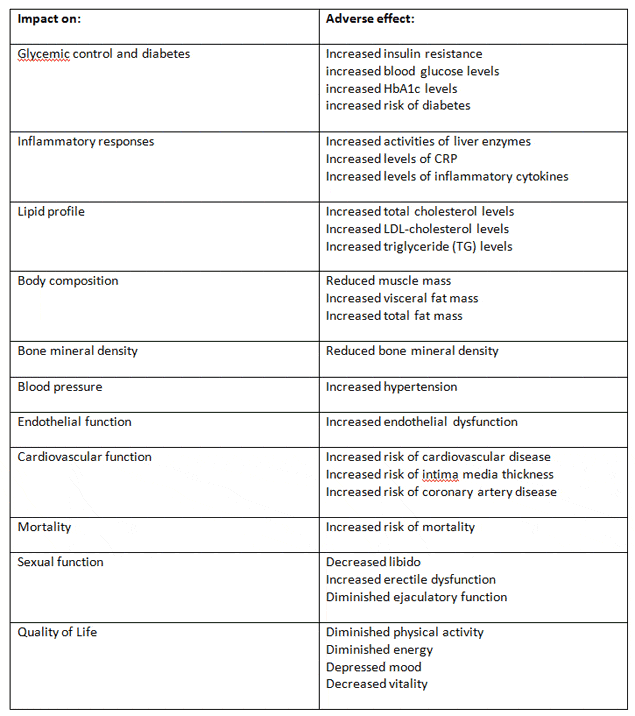
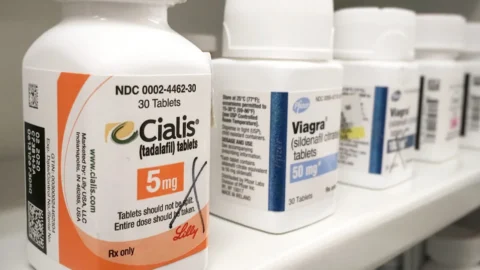
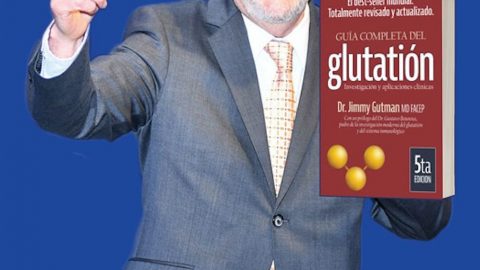
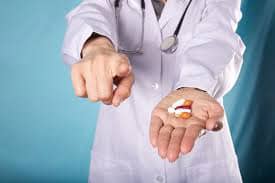


Great article, Monica.
I do have a follow up question, are all Testosterone Replacement Therapies the same? Or, are some types of treatments better than others?
That’s a very different question that would take some time to explain. All TRT is not created equal. There are pros/cons to all the options offered, and what’s offered in the US say, may be different than what’s offered in another country, and so forth.
One has to discuss with a qualified medical professional about which options are right for which people. I, and Monica, have a number of articles in TRT, HRT, testosterone, etc here, and I have several vids also, you may want to look at.
Good luck!
I would like to see more emphasis on Libido enhancement.The majority of men and Doctors’ convey that going on TRT will in fact increase libido. While it MAY in some, Libido and and TRT are two different issues. I would love to see you folks see what you can come up with regarding how one can most effectively increase libido for aging men or men on TRT.
There are many different types of testosterone formulations (injectable, dermal etc) and esters, so all Testosterone Replacement Therapies are NOT the same.
In addition is the issue of dosing, baseline levels and age etc.
I will cover all this is much more dept in an upcoming article.
Great article! I’ll tell my story briefly. Perhaps it will help someone else in their decision making. I am 54 years old, an old wrestler/jock; very acquainted with working out very hard and relishing the discomfort. Last year, I had been working out regularly and vigorously. I have a very stressful job an during the course of the year, along about October, some circumstances at my work caused a great deal more stress in order to maintain the system etc. Along with this, seemingly all of the sudden, I found it extremely difficult to work-out and run. Even to the point where I would be in my running stuff, standing out, watching the sun set but unable to get off the dock. This went on all winter and spring. It was confusing and confounding. Add to this, weight gain. I went from riding road bikes with my 21 year old son at 7000 ft. to – confounded with no self-insight. In June I shared my conundrum with a close friend of mine – a physical therapist who knows me well. He said, “Low-T. You need to see a Dr.” I began to research it and scheduled an appointment. When they asked my why the appointment, I said, “I think I am experiencing symptoms of low testosterone.” The Dr. seemed somewhat skeptical, along the lines of, “You need to exercise more.” My response was, “Look totally understand the exercise part. In my garage I’ve got a heavy bag, weights, a Prowler (like the Doc would know what that is!), tires, ropes, bars – I just don’t seem to have the ability to overcome the inertia and it has been rather sudden in my opinion.” The Dr. Ordered screenings including “T”. They called me a week later and said all my blood work was great except – You got it, “Low -T”.
Long story short, they started me on “T” treatments in late June. I am back to running, lifting, riding and working hard (though it has taken a few months to get back to where I was in good enough condition to work really hard – and losing weight gaining some muscle. As you would guess, I am grateful for the therapy. I am back to being – ME. My only other consideration would be that at 54 the recovery time from a hard workout is considerably longer. I really have to shift from weights to light jogging to riding to pulling the tire, pushing the prowler etc. and sometimes a couple of days of full rest and hydration. I mentioned experimenting with small doses of HGH along with the “T” to my Dr. She wasn’t too keen on that idea.
Anyway, this is long winded but, maybe it will some other mid-life guy overcome the embarrassment of coming to grips with the fact that your workout problems might be “hormonal” Good luck and thanks for the info.
By the way, most of the studies I found on Testosterone therapy were for men that were 70+ and sedentary. I’m glad you introduced this study.
Roy, thanks for sharing your story. Like you experienced, the traditional medical community is still reluctant to both testosterone and GH therapies. Until conservative doctors open their eyes, we will have to read the studies and share our experiences, and empower others to take charge of their own health and put their foot down on the reluctant medical establishment.
Great stuff Monica/Will,
I have been following this debate for quite a while now, Thank you for supplying a balanced view of the discussion.
It appears that us blokes of “middle age” have quite a battle on our hands, could this be a form of discrimination on the part of women?
Hmmm, probably should’t have said that.
Keep up the good work guy’s and I look forward to more educational material from both of you.
Regards,
Jack
TRT is controversial for several reasons.
Check out my previous article for an overview:
http://www.trainergize.com/anti-aging/testosterone-replacement-therapy-why-is-it-so-controversial
Monica,
Great article and break down of the studies. What are your thoughts on the recent study showing that estrogen imbalance in men is also a significant factor in waistline and decreased mail libido? The study appears to look at a balance of both testosterone and estrogen.
Yes, both testosterone and estradiol (the dominant estrogen) need to be kept in check. When men take testosterone, a significant amount of it can be converted into estradiol by aromatase. This is especially the case in older men who have more body fat than younger men.
From personal experience, E2 is the most difficult hormone to “dial in”. Over time some strategies from the “experienced” TRT users can be beneficial. Most Doctors are clueless on the issue. Very sad!
Great Article. My T is at the low end and my cholesterol a bit high. I have heard that lack of proper nutrition/supplements can be responsible for not converting the cholesterol into testosterone. Do you know anything about this? Thanks
Elevated LDL cholesterol could be an indicator that you might benefit from TRT.
While cholesterol is needed for synthesis of testosterone (and all other steroid hormones), there are no nutrients or supplements that can significantly elevate testosterone levels (don’t fall for the marketing hype!).
The only way to significantly elevate testosterone, other than getting a script for it from your doctor, is to lose excess body fat (by healthy eating and regular exercising).
Your post is really informative sharing the wonderful information.
You’re welcome Lisa. I’m glad you like it.:)
Great article Monica, I appreciate all the work you are doing in this regard.
My situation is some what similar to Roy Sandoval, however my problem started 4 years ago, I’m now 58.
I am from Australia and have had a real problem to get anywhere with the doctors I have seen. I have had my blood work done (at my own expense) and have seen 8 different doctors in the last 4 years, 6 of them agree that my T is very low, the other two told me to go and buy the little blue pills (Viagra).
Of all 6 doctors that agree my T is low to very low, not one of them will write a script for T replacement treatment of any kind.
How the hell do you make the medical practitioners accept that T replacement is a viable and safe option?.
Keep up the good work,
Jack